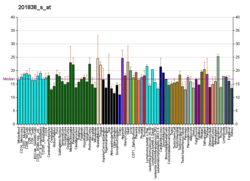| SUPT7L | |||||||||||||||||||||||||||||||||||||||||||||||||||
|---|---|---|---|---|---|---|---|---|---|---|---|---|---|---|---|---|---|---|---|---|---|---|---|---|---|---|---|---|---|---|---|---|---|---|---|---|---|---|---|---|---|---|---|---|---|---|---|---|---|---|---|
| Identifiers | |||||||||||||||||||||||||||||||||||||||||||||||||||
| Aliases | SUPT7L , SPT7L, STAF65, STAF65(gamma), STAF65G, SUPT7H, SPT7-like STAGA complex gamma subunit, SPT7 like, STAGA complex gamma subunit, SPT7 like, STAGA complex subunit gamma | ||||||||||||||||||||||||||||||||||||||||||||||||||
| External IDs | OMIM: 612762; MGI: 1919445; HomoloGene: 8907; GeneCards: SUPT7L; OMA:SUPT7L - orthologs | ||||||||||||||||||||||||||||||||||||||||||||||||||
| |||||||||||||||||||||||||||||||||||||||||||||||||||
| |||||||||||||||||||||||||||||||||||||||||||||||||||
| |||||||||||||||||||||||||||||||||||||||||||||||||||
| |||||||||||||||||||||||||||||||||||||||||||||||||||
| |||||||||||||||||||||||||||||||||||||||||||||||||||
| Wikidata | |||||||||||||||||||||||||||||||||||||||||||||||||||
| |||||||||||||||||||||||||||||||||||||||||||||||||||
STAGA complex 65 subunit gamma is a protein that in humans is encoded by the SUPT7L gene. [5] [6] [7]






